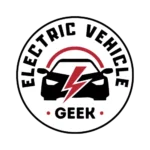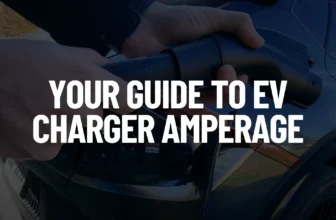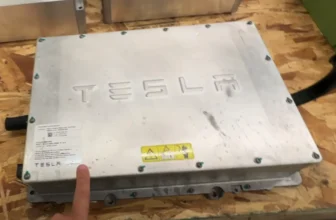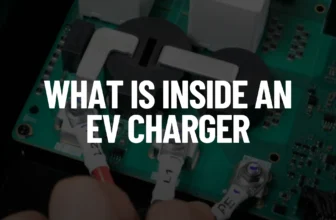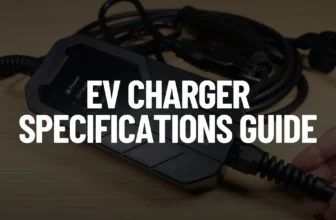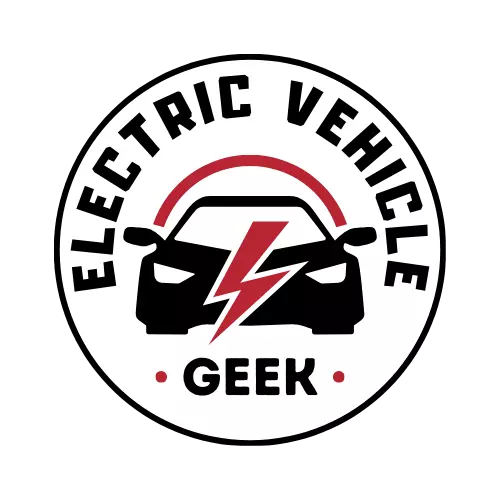Three-phase EV Charger Installation allows for efficient power delivery to support a wide range of EV charging levels:
- Level 1 (120V): Ideal for low-power overnight charging using a standard outlet (limited range gain).
- Level 2 (208V, 240V): Most common residential and commercial installations, providing faster charging speeds.
- Level 3 (480V Delta, 600V): High-powered DC fast chargers used in public charging stations, enabling rapid battery replenishment.
In this guide, we will provide step-by-step instructions on installing Level 2 EV chargers across different three-phase voltage levels available in the USA and Canada such as 208V, 240V (High Leg Delta), 480V (Delta), and 600V (Wye). Each three-phase EV charger configuration requires careful planning and adherence to electrical codes to ensure the chargers operate efficiently and reliably.
Table of Contents
- Can I Install a 3-Phase EV Charger at Home?
- Three-Phase EV Charger Installations and Voltage Configurations Explained
-
208V Three-Phase Panel EV Charger Installation – NEC – US
- Single Phase EV Charger Installation with 1-Pole Breaker (120V) – NEC – US
- Single Phase EV Charger Installation with 2-Pole Breaker (208V) – NEC – US
- Three-Phase EV Charger Installation with 3-Pole Breaker (208V) – NEC – US
- Single Phase EV Charger Installation with 3-Pole Breaker (120V) – NEC – US
- Single Phase EV Charger Installation with 3-Pole Breaker (208V) – NEC – US
- 240V Three-Phase Panel EV Charger Installation – NEC – US
- 480V Three-Phase Panel EV Charger Installation – NEC – US
- 600V Three-Phase Panel EV Charger Installation – NEC – US
-
208V Three-Phase Panel EV Charger Installation – NEC – US
Can I Install a 3-Phase EV Charger at Home?
Yes, you can install a 3-phase EV charger at home by wiring a Three-phase distribution board and Consumer Unit from the utility pole to a 3-phase Energy Meter and Distribution board.
In the United States, most residential homes typically have 120V/240V Single Phase EV charger installations, supporting both 120V and 240V electric vehicle branch circuits. However, in homes with three-phase electrical systems, multi-unit dwellings requiring EV chargers, and commercial installations with high power and voltage requirements, three-phase EV charger installations are preferred.
Three-Phase EV Charger Installations and Voltage Configurations Explained
Chargers that require three-phase EV installations accommodate various voltage configurations depending on the electrical panel system they are designed for:
208V Three-Phase Panel EV Charger Installation – NEC – US
This configuration utilizes three hot wires and operates at 208 volts in a three-phase system. It’s commonly used for the installation of 120V Level 1 EV chargers and 208 V Level 2 EV chargers in both residential and commercial settings.
Single Phase EV Charger Installation with 1-Pole Breaker (120V) – NEC – US
The image below illustrates a single-phase EV charger installation using a 1-pole breaker with one hot wire and one neutral wire. The installation is designed for 120V charging in a three-phase electrical panel.
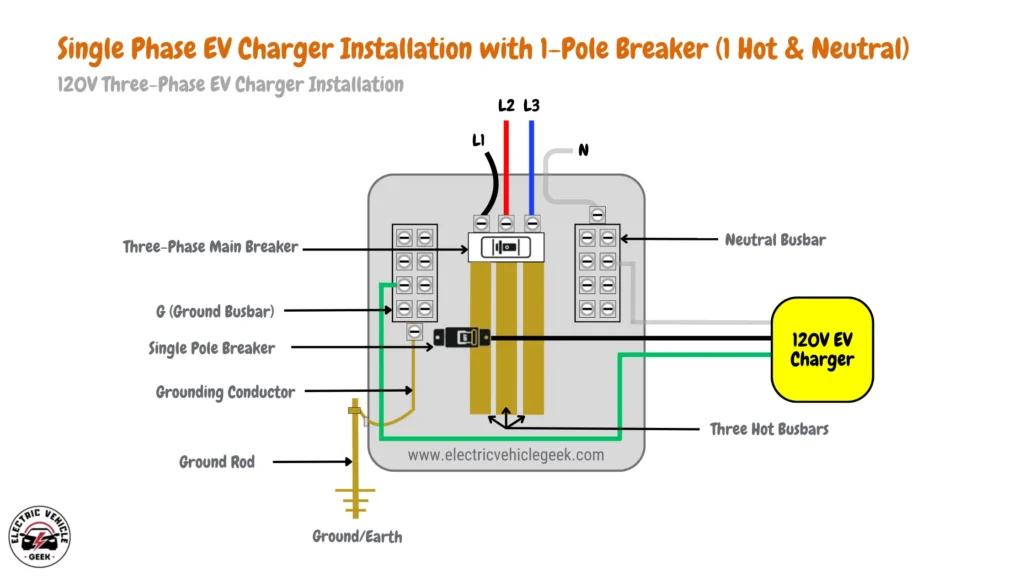
Single Phase EV Charger Installation with 2-Pole Breaker (208V) – NEC – US
Diagram of single-phase EV charger installation with a 2-pole breaker (2 hot wires) in a 208V three-phase EV charger setup.
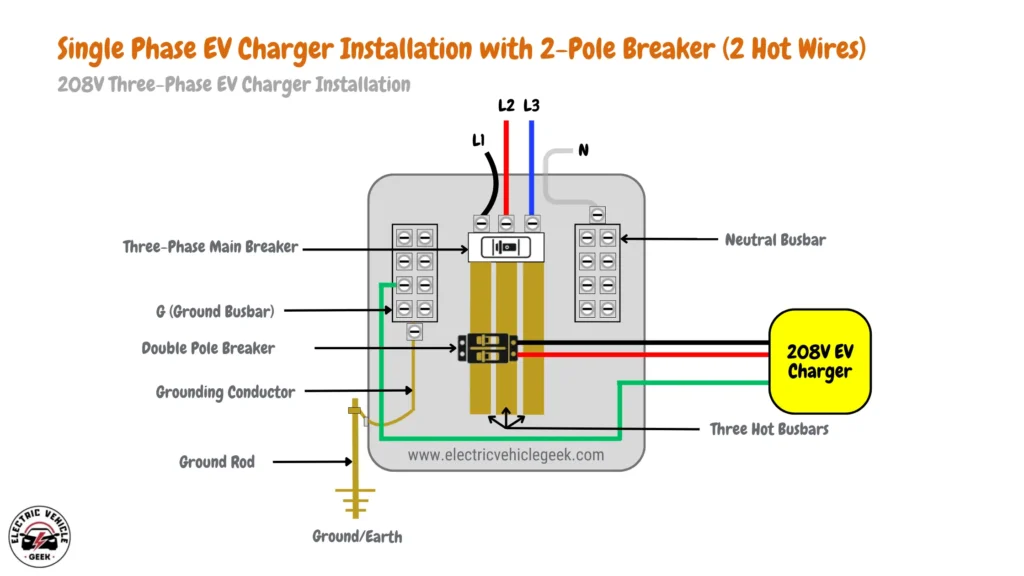
Three-Phase EV Charger Installation with 3-Pole Breaker (208V) – NEC – US
Illustration showing a three-phase EV charger installation using a 3-pole breaker with three hot wires and one neutral wire. This setup is configured for 208V in a three-phase electrical system.
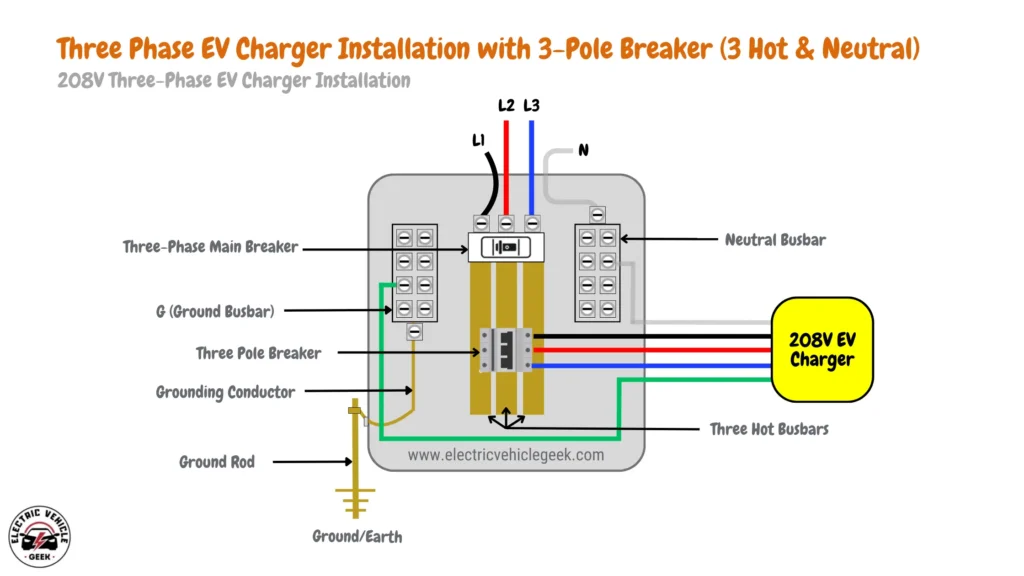
Single Phase EV Charger Installation with 3-Pole Breaker (120V) – NEC – US
The diagram below depicts a single-phase EV charger installation utilizing a 3-pole breaker with one hot wire and one neutral wire. The installation is intended for 120V charging within a three-phase electrical system context.
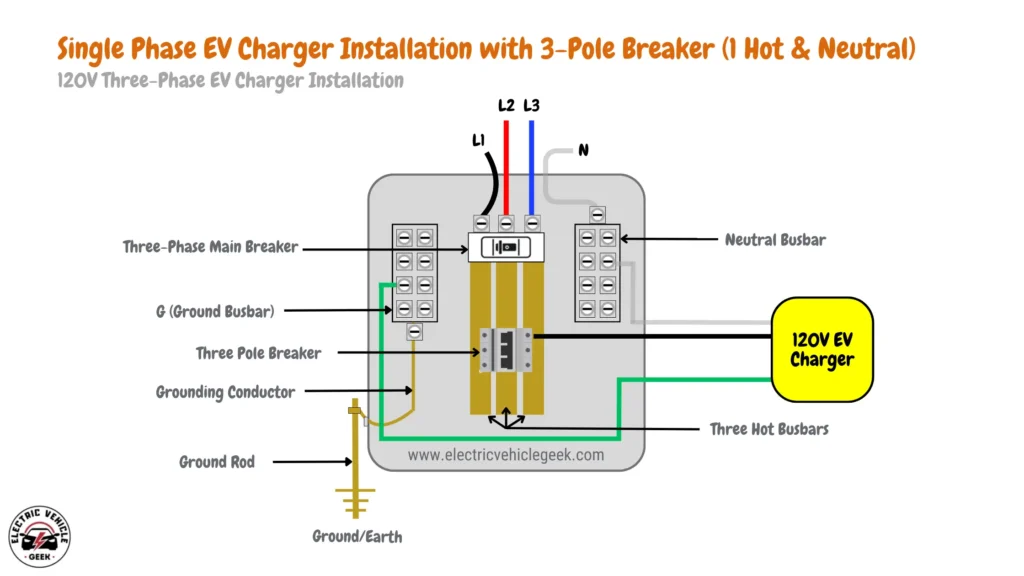
Single Phase EV Charger Installation with 3-Pole Breaker (208V) – NEC – US
The diagram below illustrates a single-phase EV charger installation employing a 3-pole breaker with two hot wires. This setup is designed for 208V charging within a three-phase electrical system configuration.
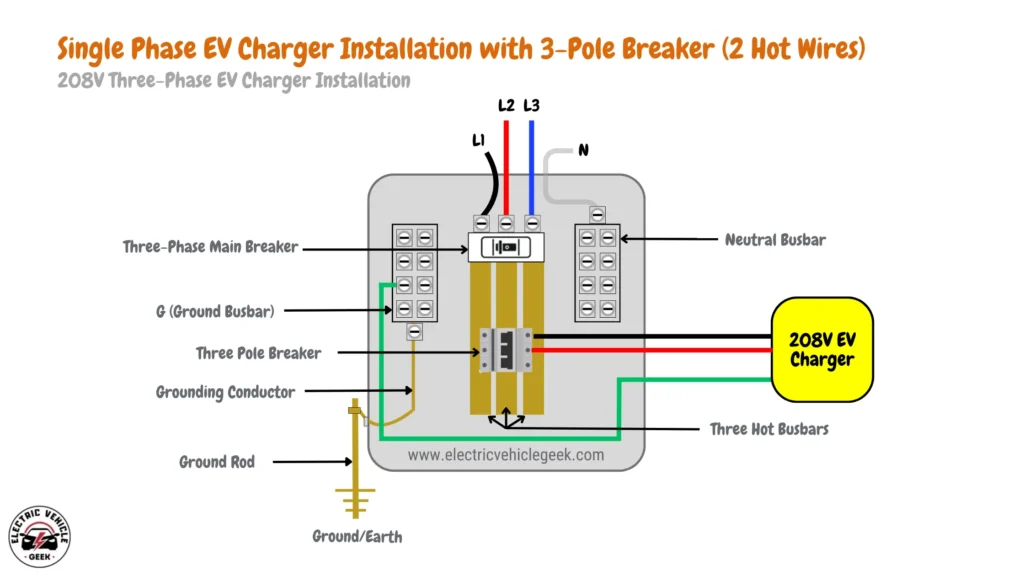
240V Three-Phase Panel EV Charger Installation – NEC – US
Also known as “high-leg delta” this configuration has three-phase conductors where one phase is center-tapped to the ground.
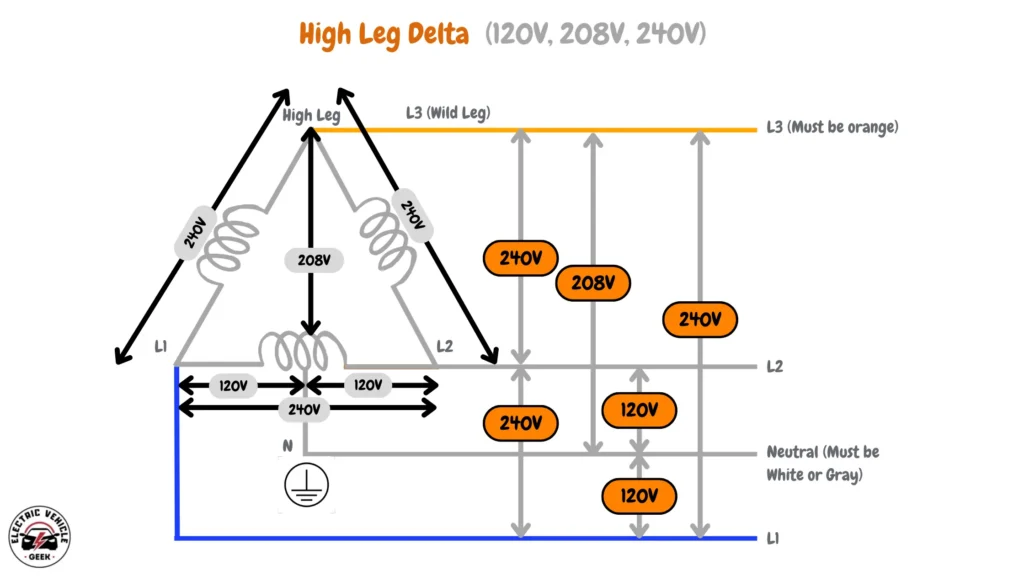
This creates a high leg voltage between one phase and ground (typically 208V to ground for a 240V delta system). The three-phase voltage between phases is 240V.
240V three-phase EV charger Installation delivers 240 volts across three hot wires in a three-phase system. It’s used in the installation of 120V Level 1 EV chargers, 208V, and 240V Level 2 EV chargers where higher voltage is required.
Single Phase EV Charger Installation with 1-Pole Breaker (120V) – NEC – US
This circuit diagram below illustrates a single-phase EV charger installation using a 1-pole breaker with one hot wire and one neutral wire, configured for 120V charging within a 240V three-phase electrical panel.
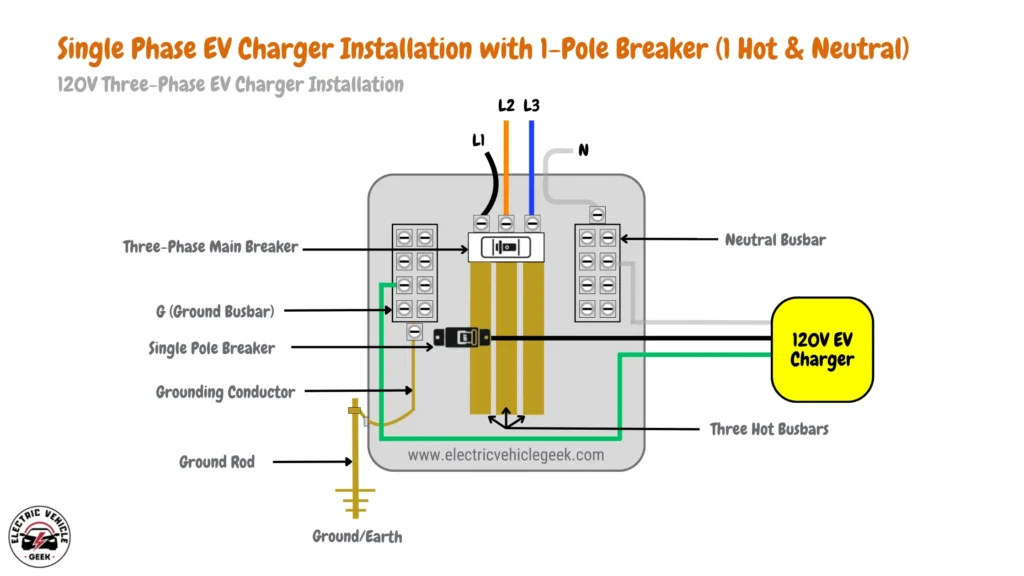
Single Phase EV Charger Installation with 1-Pole Breaker (208V) – NEC – US
This circuit diagram below shows a single-phase EV charger installation using a 1-pole breaker with one high leg (wild leg) and one neutral wire, designed for a 208V EV charger installed in a 240V three-phase electrical panel.
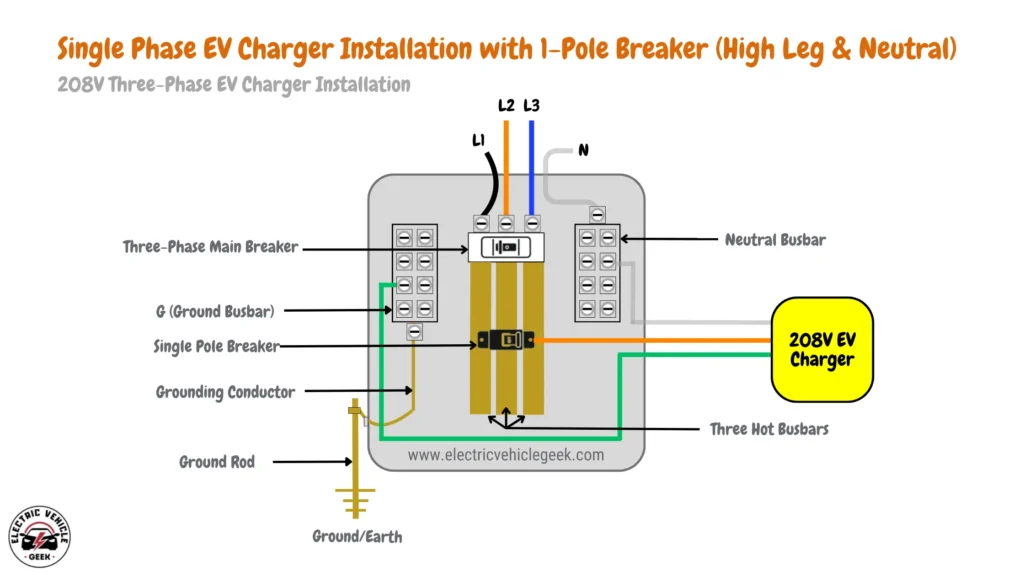
Single Phase EV Charger Installation with 2-Pole Breaker (240V) – NEC – US
The diagram illustrates a single-phase EV charger installation featuring a 2-pole breaker with two hot wires, tailored for 240V charging in a 240V three-phase electrical panel configuration.
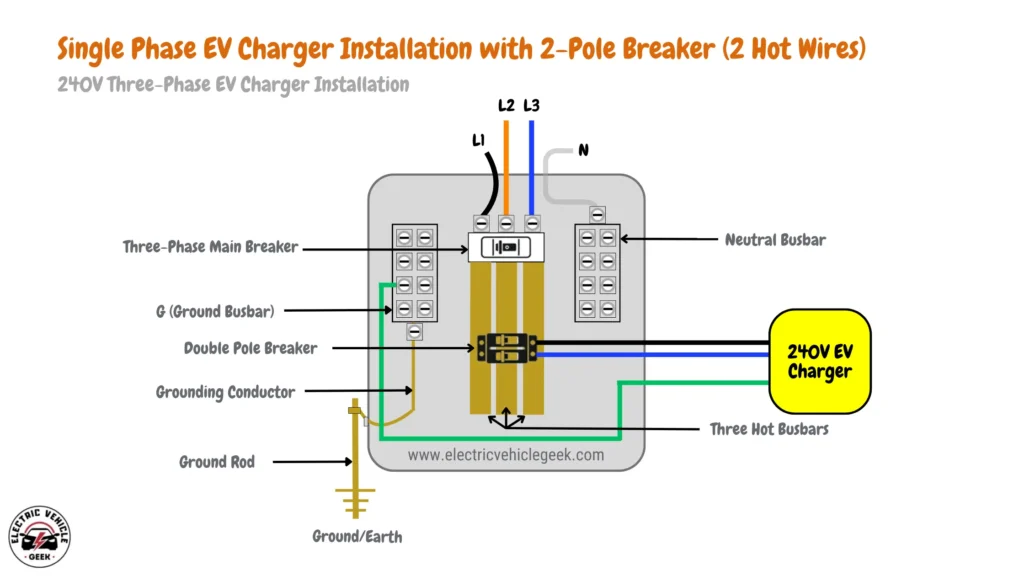
Three-Phase EV Charger Installation with 3-Pole Breaker (240V) – NEC – US
The diagram below showcases a professional three-phase EV charger installation utilizing a 3-pole breaker with three hot wires, specifically designed for a robust 240V three-phase EV charging electrical panel.
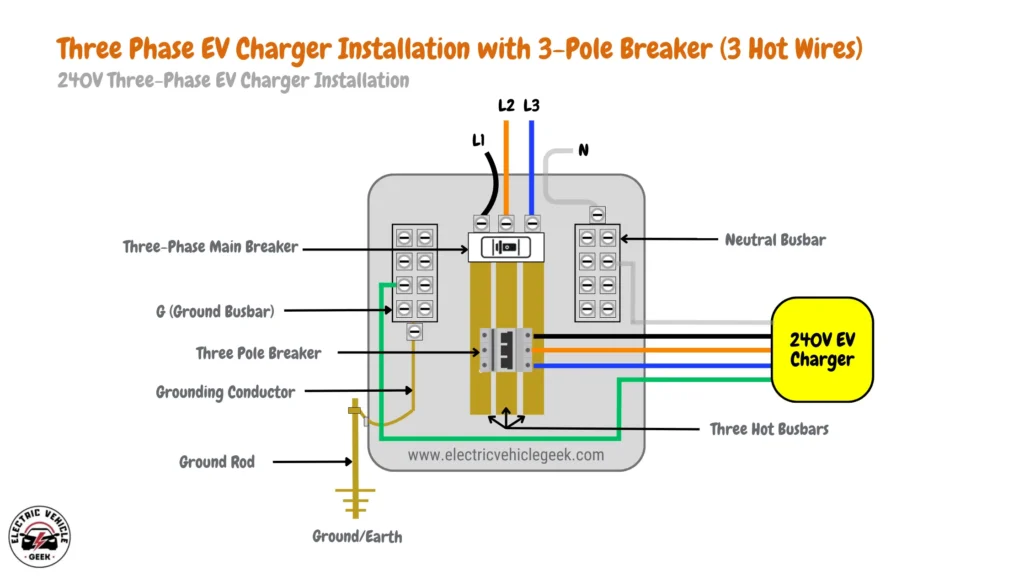
480V Three-Phase Panel EV Charger Installation – NEC – US
This configuration involves three-phase conductors connected in a triangular or delta shape, as illustrated in the diagram below, with a standard three-phase voltage of 480V between phases.
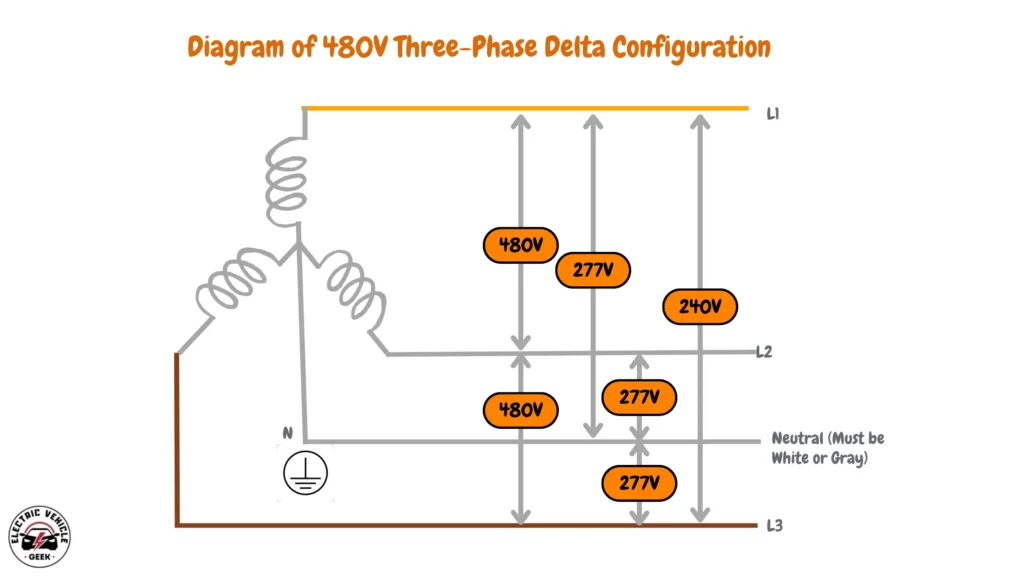
Delta configuration provides 480 volts across three hot wires in a three-phase system. It’s often used in the installation of 277V and 480V EV chargers requiring substantial power.
Single Phase EV Charger Installation with 1-Pole Breaker (277V) – NEC – US
The diagram below demonstrates a single-phase EV charger installation using a 1-pole breaker with one hot wire and one neutral wire, designed for 277V charging in a 480V three-phase electrical panel setup.
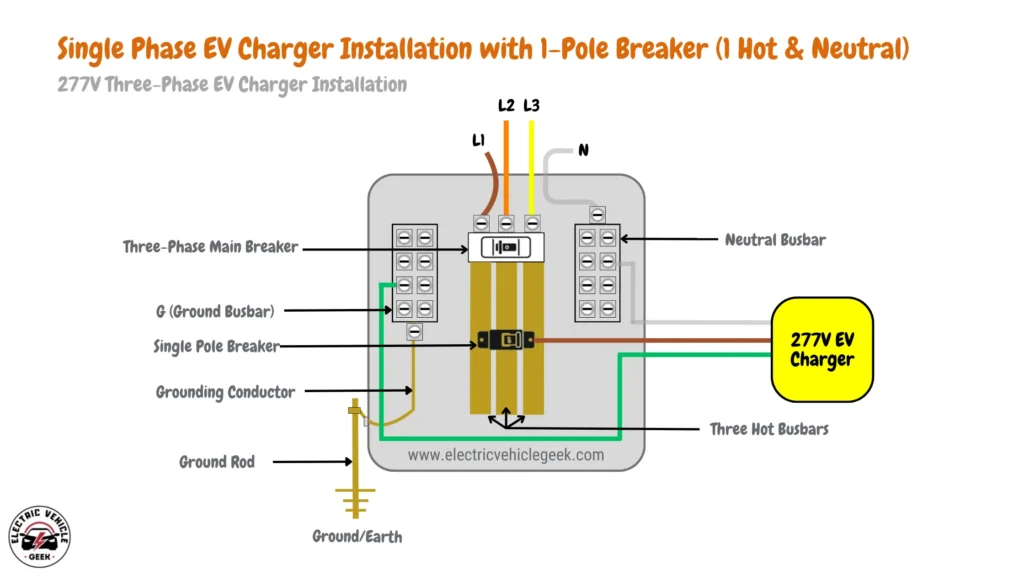
Single Phase EV Charger Installation with 2-Pole Breaker (480V) – NEC – US
The diagram below shows a single-phase EV charger installation utilizing a 2-pole breaker with two hot wires, configured for 480V charging within a 480V three-phase electrical panel system.
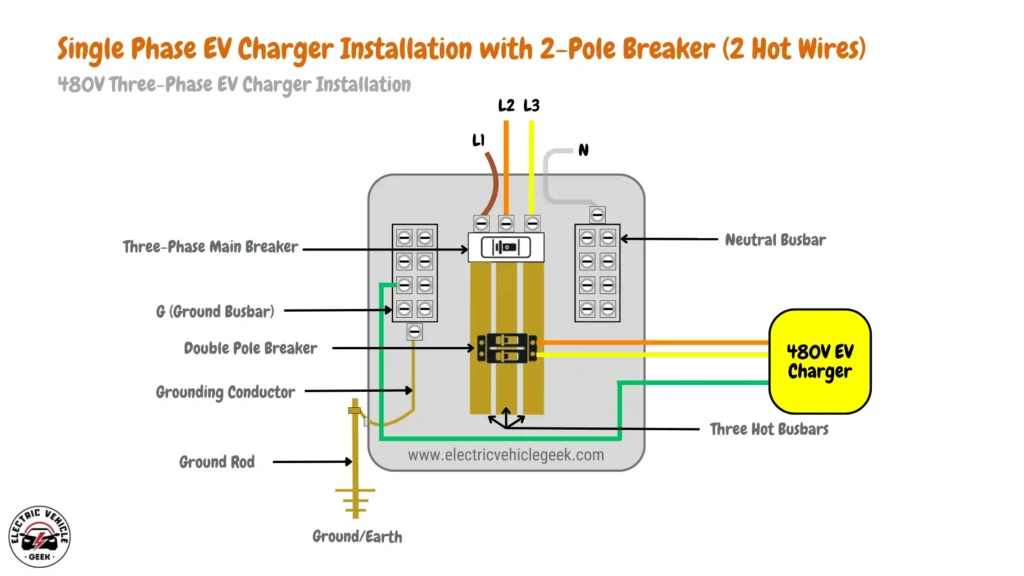
Three-Phase EV Charger Installation with 3-Pole Breaker (480V) – NEC – US
The diagram below illustrates a three-phase EV charger installation featuring a 3-pole breaker with three hot wires, designed specifically for 480V charging in a robust 480V three-phase electrical panel system setup.
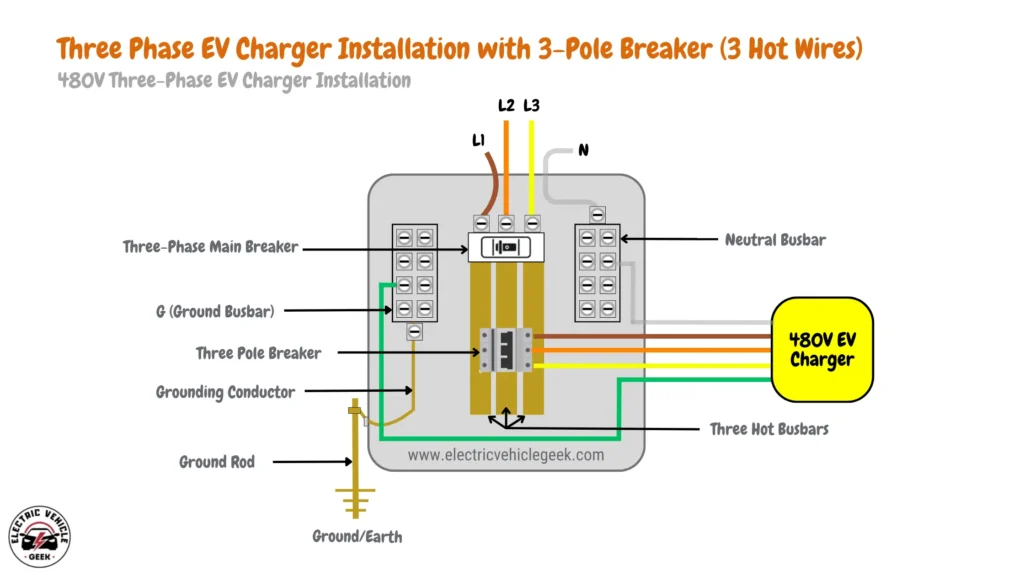
600V Three-Phase Panel EV Charger Installation – NEC – US
Also known as the “star” configuration, this system has three-phase conductors where all phases meet at a common point, and each phase is connected to a neutral conductor. The three-phase voltage between phases is typically 600V.
Wye configuration delivers 600 volts across three hot wires in a three-phase system. It’s commonly used in 600V fast-charging EV charger installations requiring high voltage and power capacity.

James Ndungu is a certified EV charger installer with over five years of experience in EVSE selection, permitting, and installation. He holds advanced credentials, including certification from the Electric Vehicle Infrastructure Training Program (EVITP) and specialized training in EV charging equipment and installation, as well as diplomas in EV Technology and Engineering Fundamentals of EVs. Since 2021, James has tested dozens of EV chargers and accessories, sharing expert insights into the latest EV charging technologies.
